By Fritz Liechti
All photos © 2024 Fritz Liechti
Peter Colat from Switzerland, one of the most famous freedivers in the world, is simply a cool guy. Cool in the truest sense of the word - after all, who would want to go apnea diving in swimming trunks, without a wetsuit and without fins under a thick sheet of ice over 100 m (328 ft)? Peter does it. I, on the other hand, would have been out of breath screaming when I dived into the 2°C cold lake. Luckily, I was only the uw-photographer and wrapped up warm in my dry suit.

Peter Colat at his world record in freediving of 106.25 m (348 ft) under the thick ice of lake Vilsalp in Austria - an incredible performance in 2°C (35.6 F) cold water. Photo: Canon R5 with RF10-20 mm lens, Dual strobe DS230. 1/160 – f13 – ISO 320 – 10 mm
At the beginning of February 2024, Peter Colat set two new world records in freediving in the frozen lake Vilsalp (near Tannheim in Tyrol/Austria).
# 1 - 106.25 m (348 ft) in freediving under ice, without a suit and without fins
# 2 - 114.2 m (374 ft) in freediving under ice, without a suit but with a monofin
Peter was only wearing swimming trunks and a swimming cap - it's crazy that someone so equipped can endure the cold under ice and has the mental strength to suppress the oppressive feeling of diving so far under a closed sheet of ice with just one breath.
Preparation to Go Under
Peter Colat has been training almost every day for years. In the last few months before the record attempt, he spent up to half an hour every day in a cold pool of water on his balcony in Switzerland. Adapting to the cold is one of the most important elements in this top-class sport.
A team of experienced safety and ice divers assisted him in his attempt in the lake Vilsalp. The biggest concern for everyone beforehand was the warm temperatures and the fear that the layer of ice in the lake would be too thin. One week before the 14-strong team arrived, they were relieved. The ice was 14 cm (5,5 inch) thick, and the lake was frozen through to the edge.

The safety and uw-photo team with the official AIDA competition judge.
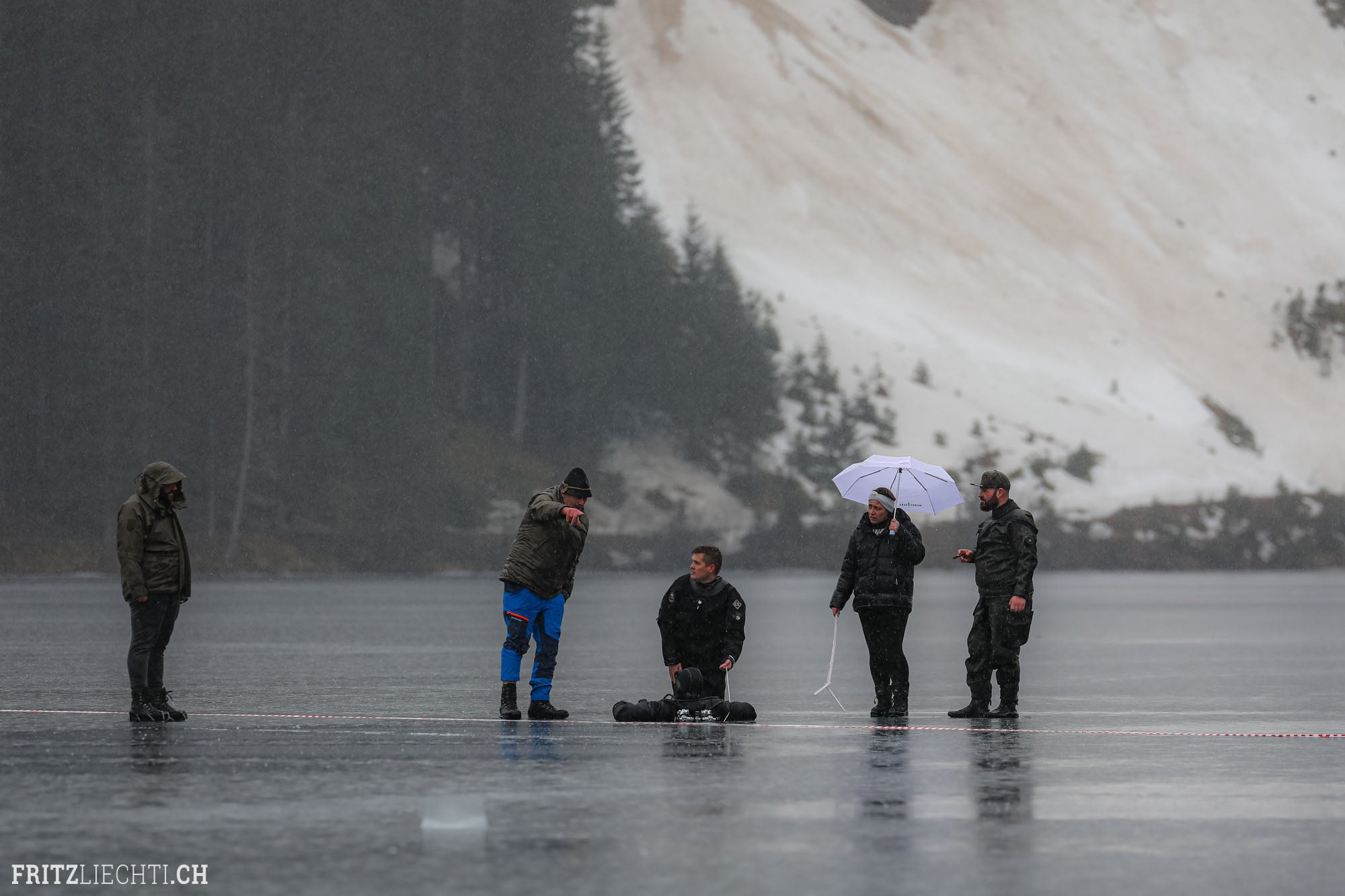
Measuring the dive track and creating the entry and exit holes and the guideline under water for Peter and the whole diving team. Measuring incorrectly is a no-go - the world records only count if all the holes are in the right place. With the heavy rain, the ice surface is extremely slippery.
Small, triangular exit holes were cut into the ice for Peter. For the safety divers and the photographer, large crosses were cut into the ice approx. 20 m from the record section, allowing the team to get in and out with their scooters and cameras.
How to Not Miss the Shot
First of all, I just had to be sure that I could take good photos. A world record with lousy photos, my colleagues and Peter would have murdered me.
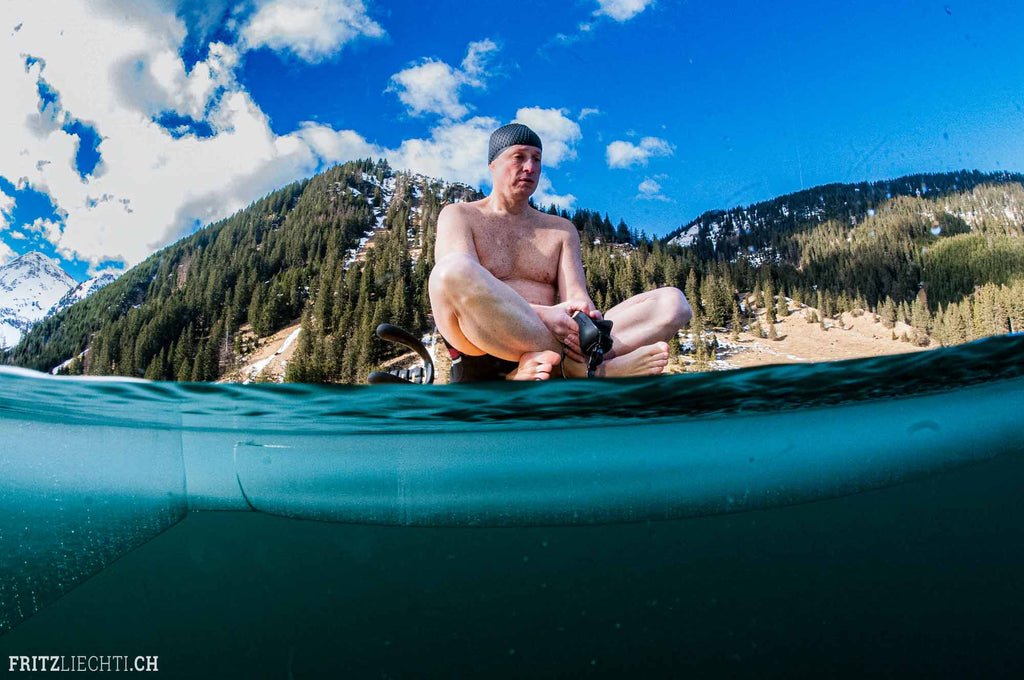
Peter Colat at the start of his dive preparation - absolute concentration. Photo: Michael Gmuer

Close to the world record mark - an incredible mental feat – above is the hole with fresh air. I use the Canon RF 10-20 F4 lens because it doesn't bend the safety rope like a banana (the way a Canon EF 8-15mm Fisheye does). The media prefer classic but spectacular photos. 1/160 • f13 • ISO 320 • 10mm
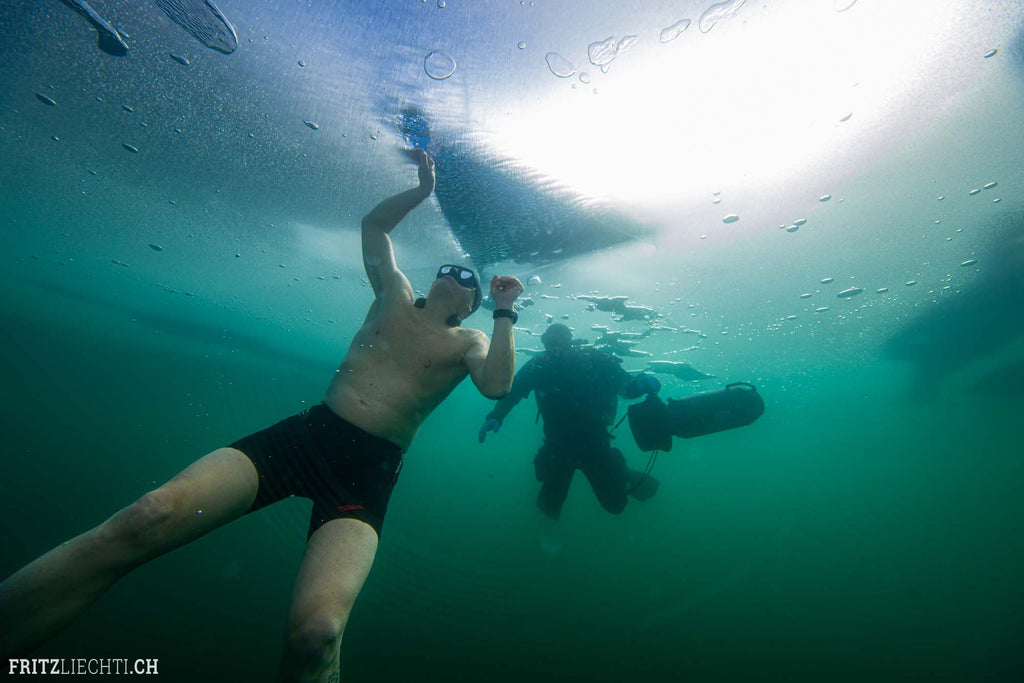
Surfacing after a long dive. - It's done after 2:33 under ice! New world record with 106.25 m (348 ft). 1/160 • f13 • ISO 320 • 10 mm
I was in the water with 3 cameras. A Canon EOS R5 with the RF 10-20mm F4 lens and dual DS230 strobes as the main camera. A Canon EOS 5D Mark IV with an EF 17-40 F4 lens and dual DS160 strobes as a backup floating behind my back. The main camera also had a GoPro 12 mounted for videos. As another backup I had another Canon 5D Mark IV with an EF 8-15mm Fisheye Lens at our entrance hole.

Peter on his way to his next world record under ice of 114.2 m (374 ft), without suit but with a monofin. 1/200 • f9 • ISO 320 • 16mm
Lenses Selection
I wanted to get close to the freediver, but I couldn't obstruct or disturb him under any circumstances. This meant that I needed a wide-angle lens for catching the person with fins, but not a fisheye because of the lead rope. Zooming had to be possible.
Camera Settings
I always work with the preset settings C1-C3. This allows many parameters to be changed instantly with a flick of the wrist. C1 as the main setting was set to Tv 1/160 / Av 12 (bigger depth of field, as I took the freediver in an 45° angle) / ISO 400 (higher ISO so that the flash fires with less power and can fire again even faster). In addition, the water was rather cloudy, I wanted to brighten the particles less with a reduced flash.
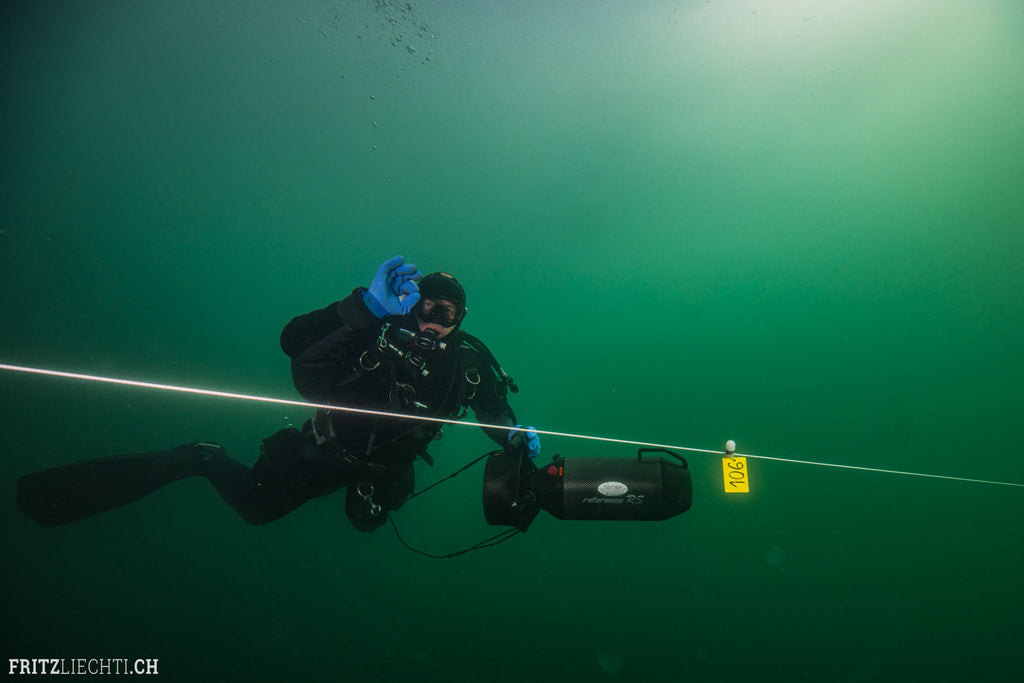
Safety diver with scooter on the lead rope. The important distances are marked and have a flashing light. From a distance of more than 5-6 m, however, the line is very difficult to see. There was no super visibility under the ice. 1/160 • f10 • ISO 320 • 11mm
After the test shoot of my backup diver, I kept these values. C1 had a limited field of focus on the left side (the diver was coming from the right), C2 had the same values but was set to eye focus. C3 had a large field of focus.
My buddy and I floated for 20 minutes in 2°C cold water in front of a thin white rope. I was afraid that the inside of the dome would fog up. That's why I stuffed tampons inside the housing to be on the safe side. I photographed the rope periodically so that the electronics were ready. If there were any problems, I would have used my backup.

My workplace – nothing than a rope and a sticker – behind me my security diver, as I was not attached to a rope. The Canon RF 10-20 4F shows a straight rope. 1/160 • f10 • ISO 250
Taking photos in such fast situations is easier with the external monitor than with the 45° viewfinder. With a dry suit and thick gloves, the use of buttons it's usually not so easy. To take the photo was like standing beside the railroad track in the fog and suddenly an express train rush past. After several seconds it's all over.
Well - my colleagues didn't kill me. The photos were in the box. The eye focus at the second dive didn't work (Peter had his head down and was looking at the rope), but luckily for me Peter aborted this dive.
Perseverance
As an underwater photographer, you must be able to deal with stress - good preparation and setting up what is going to happen is worth its weight in gold. Some shots you can do only one time, then the moment is gone.

My buddy with our safety line. We wouldn't have found the way back to our hole without the line. 1/200 • f9 • ISO 400
Now - if any of you want to go under the ice in swimming trunks, please send me a message. I know now how it works and I'm coming with you. But please don’t start screaming when jumping in frozen lakes! It will destroy my picture settings.
Everyone else can start training with cold showers. Me, no way – I will go with my wife to Raja Ampat and try to get some nice shots – we prefer warm water!
Learn More: View a Short film about Peter Colat, published from national Swiss TV [German language]
Additional Reading
Fighting for the Best Picture: Live Underwater Photography Competitions
Working With a Freediving Model in Open Water
River Junkie: Underwater Photography in the Freshwaters of Switzerland
Photographing the Salmon Run Underwater in Canada
Customer Photos | Fritz Liechti from the Fresh Water of Switzerland
Fritz Liechti of Switzerland started diving in 1986 and rarely goes into the water without a camera. He particularly enjoys diving in Switzerland's rivers, especially at night. He travels the world and teaches underwater photography as a CMAS (World Confederation of Underwater Activities) Diving and Underwater Photo Instructor. He has had his work published in several magazines and represented Switzerland in the 2019 CMAS Underwater Photo World Championships. See more of his work at fritzliechti.ch











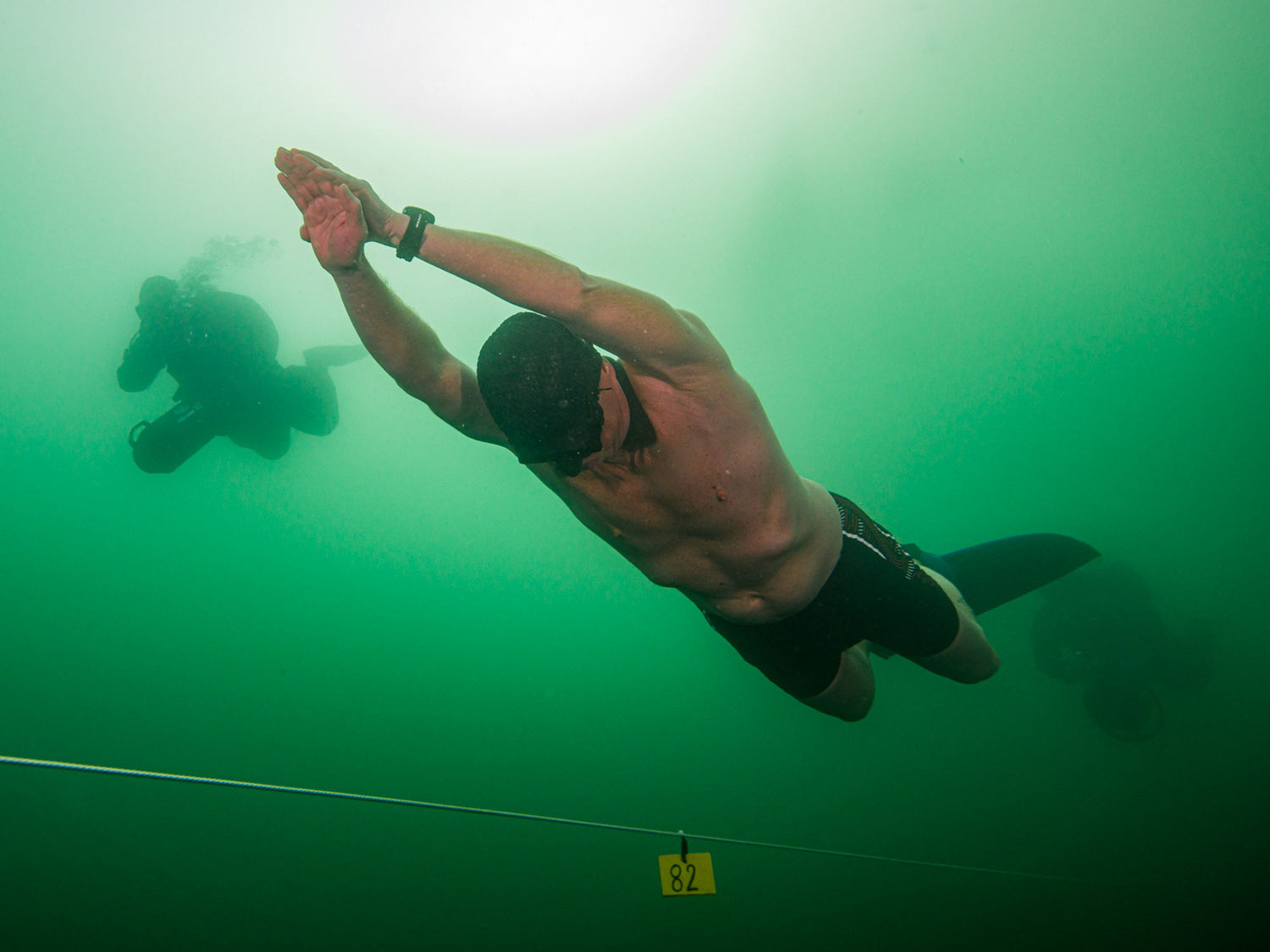

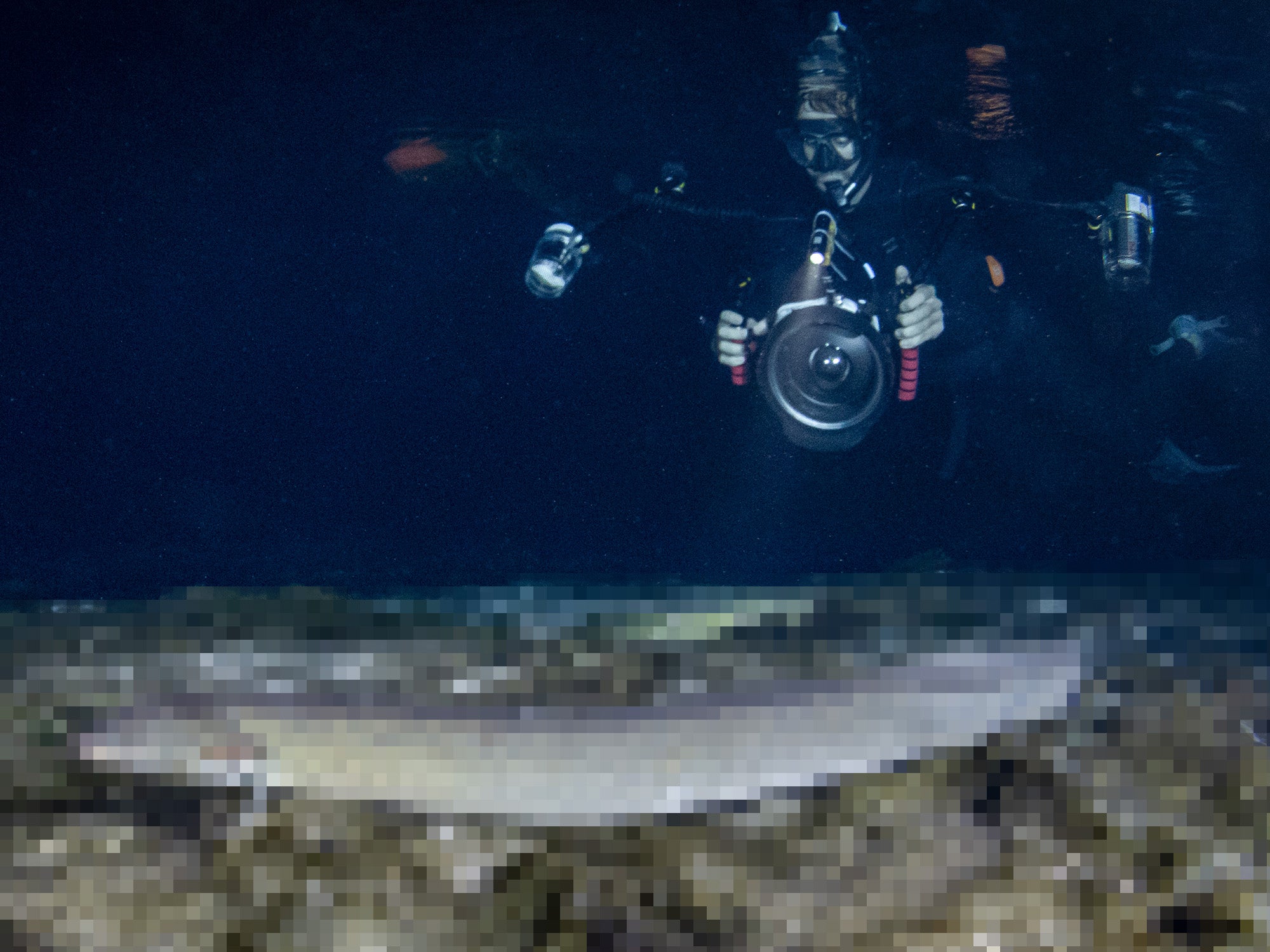
![Becoming a BETTER Underwater Photographer in My Florida Backyard // Ikelite Ambassador Bryant Turffs [VIDEO]](http://www.ikelite.com/cdn/shop/articles/bryant-turffs-ambassador-profile-video-cover.jpg?v=1715193406&width=2000)